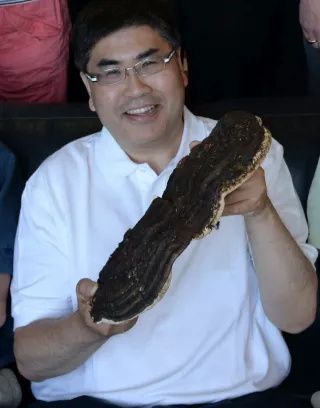
Lee, Dr. Chow
PhD (Flinders University); BSc Honours (University of New South Wales)
Biography
Dr. Lee joined UNBC in September 1998 after post-doctoral training at the Ontario Cancer Institute, McArdle Laboratory for Cancer Research at the University of Wisconsin-Madison, and BC Cancer Research Centre. He is one of the early pioneers in establishing biochemistry and molecular biology teaching and research at UNBC. Dr. Lee has served as a reviewer and panel reviewer for numerous national and international research grant funding agencies. He strongly believes in the significance of science and technology in contributing to the prosperity of Canada. Therefore, he is very passionate about inspiring and nurturing high school students as well as undergraduate students to become the next generation of Canadian scientists.
Research and expertise
Dr. Lee’s main research interest is cancer biology and in discovering novel medicinal compounds from British Columbia (BC) natural resources. His lab was one of the first to demonstrate the link between apurinic/apyrimidinic endonuclease 1 (APE1), an enzyme well-known for its role in base excision DNA repair pathway, and RNA metabolism. Dr. Lee’s lab also focuses on understanding the molecular interaction between insulin-like growth factor 2 mRNA-binding protein-1 (IMP1), an oncogenic RNA-binding protein, and its target mRNAs. Recent work from his lab include using zebrafish as a model system to study IMP1 granules formation and discovering compounds that can disrupt IMP1-RNA interaction. More recently, Dr. Lee’s research interest is in natural products drug discovery. He has collaborated with colleagues at UNBC to find novel compounds, both small molecules and large molecules including complex polysaccharides, with medicinal properties from BC natural products. To date, the team has focused on mushrooms native to northern BC.
- Biomedical
- Cancer
- Chemistry
- Health
- English
Selected publications
Natural products drug discovery research:
Zeb M, Tackaberry LE, Massicotte HB, Egger KN, Reimer K, Lu G, Heiss C, Parastoo Azadi, Lee CH. (2020) Structural elucidation and immuno-stimulatory activity of a novel polysaccharide containing glucuronic acid from the fungus Echinodontium tinctorium. Submitted.
Deo GS, Khatra J, Buttar S, Li WM, Tackaberry LE, Massicotte HB, Egger KN, Reimer K, Lee CH. (2020) Comprehensive comparison of biological activities of extracts derived from mushrooms collected in Northern Interior British Columbia: Part I and Part II. Submitted.
Yaqoob A, Li WM, Liu V, Chuyi Wang, Sebastian Mackedenski, Tackaberry LE, Massicotte HB, Egger KN, Reimer K, Lee CH. (2020) Grifolin, neogrifolin and confluentin from the terricolous polypore Albratrellus flettii suppress KRAS expression in colon cancer cells. PLOS ONE 15(5):e0231948.
Javed S, Li WM, Yaqoob A, Zeb M, Tackaberry LE, Massicotte HB, Egger KN, Cheung PCK, Payne GW, Lee CH. (2019) Anti-inflammatory activity of a purified polysaccharide isolated from the basidiomycete fungus Echinodontium tinctorium. Molecules 24(19):3509.
Javed S, Kevin Mitchell, Daniel Sidsworth, Stephanie L. Sellers, Reutens-Hernandez J, Massicotte HB, Egger KN, Lee CH, Payne GW. (2019) Inonotus obliquus attenuates histamine-induced microvascular inflammation. PLOS ONE 14(8):e0220776.
Deo GS, Khatra J, Buttar S, Li WM, Tackaberry LE, Massicotte HB, Egger KN, Reimer K, Lee CH. (2019) Anti-proliferative, immuno-stimulatory and anti-inflammatory activities of extracts derived from mushrooms collected in Haida Gwaii, BC (Canada). Int J Med Mushrooms 21(7):629-643.
Barad A, Mackedenski S, Li WM, Li XJ, Lim BCC, Rashid F, Tackaberry LE, Massicotte HB, Egger KN, Reimer K, Cheung PCK, Lee CH. (2018) Anti-proliferative activity of a purified polysaccharide isolated from the basidiomycete fungus Paxillus involutus. Carbohyr Polym 181:923-930.
RNA biochemistry and molecular biology research:
Mackedenski S, Wang C, Li WM, Lee CH. (2018) Characterizing the molecular interaction between the insulin-like growth factor 2 mRNA-binding protein 1 (IMP1) and KRAS mRNA. Biochem J 475:2749-2767.
Li WM, Chan CM, Miller AL, Lee CH. (2017) Live-imaging of miR-430 in the developing zebrafish embryo using a specific molecular beacon. J Biol Chem 292:3568-3580.
Chohan M, Mackedenski S, Li WM, Lee CH. (2015) Human apurinic/apyrimidinic endonuclease 1 (APE1) has 3’ RNA phosphatase and 3’ exoribonuclease activities. J Mol Biol 427:298-311.
Barnes M, Rensburg GV, Li WM, Mehmood K, Mackedenski S, Chan CM, King DT, Miller AL, Lee CH. (2015) Molecular insights into the CRD-BP-RNA interaction through site-directed mutagenesis in the heterogeneous nuclear ribonucleoprotein-K-homology domains. J Biol Chem 290:625-639.
Kim W-C, Berquist BR, Chohan M, Uy C, Wilson DM III, Lee CH. (2011) Characterization of the endoribonuclease active site of human apurinic/apyrimidinic endonuclease 1 (APE1). J Mol Biol 411 :960-971.
Tell G, Wilson DM III, Lee CH. (2010) Intrusion of a DNA-repair protein in the RNome world: is this a beginning of a new era? Mol Cell Biol 30: 366-371.
Barnes T, Kim W-C, Mantha A, Kim S-E, Izumi T, Sankar M, Lee CH. (2009) Identification of apurinic/apyrimidinic endonuclease APE1 as the endoribonuclease that cleaves c-myc mRNA. Nucleic Acids Res. 37: 3946-3958.
Sparanese D, Lee CH. (2007) CRD-BP shields c-myc and MDR-1 RNA from endonucleolytic attack by a mammalian endoribonuclease. Nucleic Acids Res 35: 1209-1221.